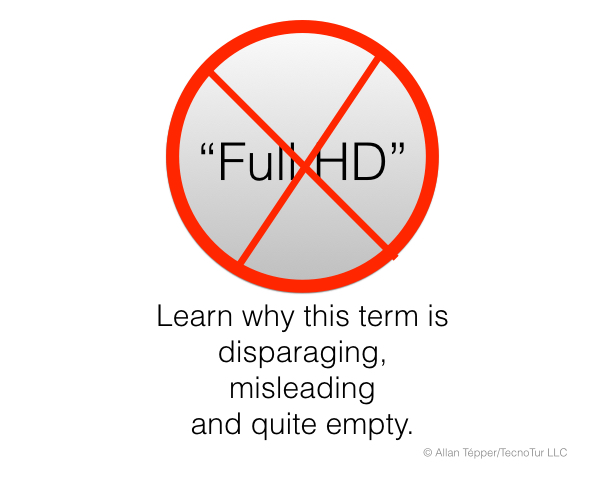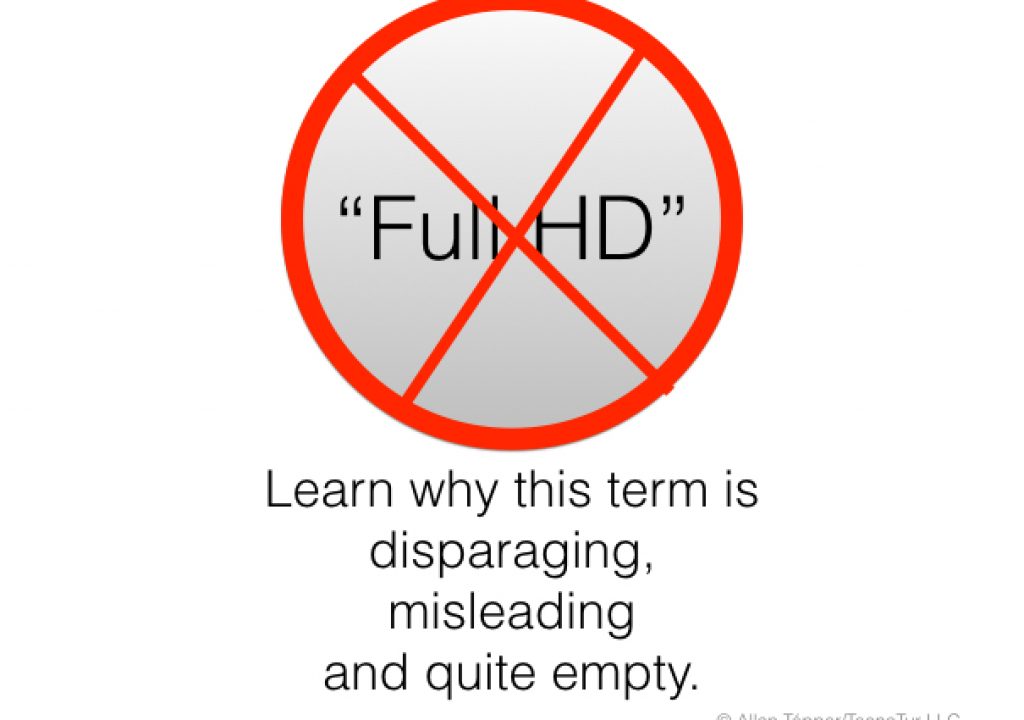Apple just announced the iPhone 6s and iPhone 6s Plus, and this is one more reason to distribute video that’s under 30 frames per second. meaning 23.976, 24, 25 or 29.97. It has nothing to do with the wonderfully improved camera in these new iPhone models. Don’t deliver any framerate that’s higher! If you have read my prior articles, you probably know that I have been recommending not distributing any video whose framerate surpasses 30, unless you work for a 720p sports channel. Then everything changes.
Apple just announced the iPhone 6s and iPhone 6s Plus, and this is one more reason to distribute video that’s under 30 frames per second. meaning 23.976, 24, 25 or 29.97. It has nothing to do with the wonderfully improved camera in these new iPhone models. Don’t deliver any framerate that’s higher! If you have read my prior articles, you probably know that I have been recommending not distributing any video whose framerate surpasses 30, unless you work for a 720p sports channel. Then everything changes.
For 720p people (and others to understand them)

As I explained in Why “Full HD” is disparaging, misleading, and quite empty (illustrated above) and in Blackmagic studio cameras finally support 720p!, there are two important reasons why at least 41 TV stations and networks in the US chose 720 over 1080. (The number outside of the US must be much higher than that, but I don’t know that number.)
- One reason (especially for news stations that do live reports from the field) is that in many cases, they can continue using the same microwave gear as they did in the analog days. That reason is completely valid, and is included in my recommendation to distribute under 30 frames per second, meaning 23.976, 24, 25 or 29.97.
- The second reason is for 720p sports TV stations and networks. Those are the ones that truly chose 720p for its much higher framerate in final transmission: 50p or 59.94p. If you are one of those, you are truly exempt from my “under 30p” recommendation, since for you, the fluidity of very fast motion on conventional TV sets is likely more important than any other place, so you are probably willing to sacrifice motion quality and consistency on most mobile devices in favor of conventional TV sets, which is your primary target.
For the rest of us
For the rest of us (who are not 720p sports channels), consistency on all screens is paramount. We cannot afford to have the motion vary between phones, phablets, tablets TV screens, and projectors. That’s why, for a long time I have been recommending final delivery/distribution at under 30p for any individual or organization that is not a 720p sports channel, i.e. 23.976, 24, 25 or 29.97 since most mobile devices that are in the hands of viewers simply cannot play anything over 30 fps, and exact 30 fps stopped being a standard when the US colorized the original monochrome television system and switched to 29.97 frames per second. The iPhone 5s, original iPhone 6 and the original iPhone 6 Plus are a small exception to the rule, since they can indeed play back up to 60 fps, as can the iPad Air 2 new iPad Pro, and they represent -and will continue- to represent a small fraction of all potential viewers on all mobile devices, especially when we count all of the other Android, Amazon, Apple and Windows Phone devices that are out there. But here is the biggest bomb to convince us to stay under 30 fps:
The new iPhone 6s and iPhone 6s Plus (shown above) have gone back to playing a maximum of 30 fps according to Apple’s published specs, so my advice stands even more so now.
To clarify, I am not talking about how many frames per second the wonderful camera in the new iPhone 6s and iPhone 6s Plus can shoot (for later playback as slow motion): I’m talking about how many frames per second they can play back on their screen.
The moral of the story
The moral of the story is that if we are not 720p sports channels, we should make all of our target framerates for our projects or timelines to be under 30p: 23.976, 24, 25 or 29.97. If you mainly shoot and distribute in a PAL or ex-PAL region, then 25p makes sense as your delivery target. If you mainly shoot and distribute in an NTSC or ex-NTSC region, then 23.976p or 29.97p makes sense. If you plan to go to filmout or DCI, then exact 24 makes sense. If your camera can shoot high framerate, use it for later use in slow motion at one of those delivery framerates, and set your shutter speed in the camera for best results at that desired delivery framerate, not the original one you shot at high framerate. For example, regardless of your high framerate when shooting, if you are going to deliver 25p, then use 1/50 as your starting point in the shutter. If you are going to deliver 23.976p, then use 1/48 (or the closest available in your camera), and if you are going to deliver 29.97p, use 1/60 as your starting shutter speed.
The importance of mobile for general video consumption
We must not underestimate the role of mobile devices for general video consumption. See Amy Gesenhues’s recent article in Marketing Land for the impressive statistics, including one that indicates mobile video viewing is up 367% since 2013. This goes hand in hand with Google’s statement that mobile searches surpassed desktop searches in 2014.
Upcoming articles, reviews, and books
Stand by for upcoming articles, reviews, and books. Sign up to my free mailing list by clicking here.
Si deseas suscribirte a mi lista en castellano, visita aquí. Si prefieres, puedes suscribirte a ambas listas (castellano e inglés).
Books, consulting, articles, seminars & audio programs
Contact Allan Tépper for consulting, or find a full listing of his books, articles and upcoming seminars and webinars at AllanTepper.com. Listen to his CapicúaFM program at CapicúaFM.com in iTunes or Stitcher.
FTC disclosure
No manufacturer is specifically paying Allan Tépper or TecnoTur LLC to write this article or the mentioned books. Some of the other manufacturers listed above have contracted Tépper and/or TecnoTur LLC to carry out consulting and/or translations/localizations/transcreations. Many of the manufacturers listed above have sent Allan Tépper review units. So far, none of the manufacturers listed above is/are sponsors of the TecnoTur programs, although they are welcome to do so, and some are, may be (or may have been) sponsors of ProVideo Coalition magazine. Some links to third parties listed in this article and/or on this web page may indirectly benefit TecnoTur LLC via affiliate programs.
Copyright and use of this article
The articles contained in the TecnoTur channel in ProVideo Coalition magazine are copyright Allan Tépper/TecnoTur LLC, except where otherwise attributed. Unauthorized use is prohibited without prior approval, except for short quotes which link back to this page, which are encouraged!


